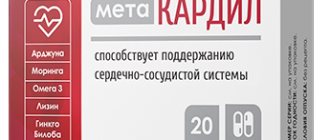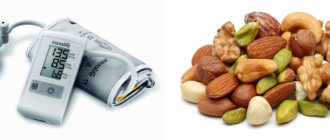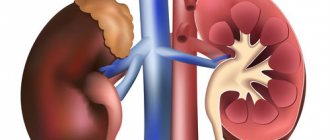- Could there be such pressure?
- What danger does 50/50 pressure pose?
- What symptoms might there be with such indicators?
- For what reasons does the pressure drop so much?
- What to do with such low pressure?
- What are the prognoses for a person?
- 50/50 in pregnant women
- In teenagers
- In the elderly
- How to prevent such a strong decrease in blood pressure?
Although it is believed that low blood pressure is less dangerous than high blood pressure, a 50/50 ratio is still a serious threat to the human body. The patient may faint, and delay in providing assistance is fraught with a sad outcome. The norm for a healthy person is 120 to 80, indicators of 50 to 50 indicate hypotension or diseases of the heart and blood vessels.
Could there be such pressure?
Before deciding on the indicators, it is worth clarifying what exactly the tonometer shows. The top is systolic pressure, and the bottom is diastolic, the difference should not be more than 40 units.
In the case of indicators of 50 to 50, the difference seems to be maintained, but at the same time they are significantly below the norm. If the numbers drop to 50 to 30, collapse will occur - a disruption of the blood supply to important human organs.
There are 3 types of arterial hypotension, in which values of 50/50 are occasionally possible:
- Orthostatic. The body is not able to properly regulate indicators on its own. A surge in pressure can occur even after a normal change of position.
- Postprandial. Blood rushes sharply to the arms and legs after eating, which leads to pressure changes. Indicates disorders of the endocrine system, changes in the brain and even mental disorders.
- Vegetative-vascular. More often found in adolescents. It confirms that there is a malfunction in the functioning of the heart and blood vessels.
Sometimes blood pressure can decrease during sleep, the reason for this is insufficient blood circulation, because the body switches to an economical mode in the dark. Often the wakefulness center begins to turn on to compensate for this condition, the patient wakes up and cannot fall asleep. Poor sleep, in turn, causes chronic fatigue, chills, and numbness in the arms and legs.
An attack of hypotension often occurs in a stuffy room or in a large crowd of people.
Characteristics and description of the problem
Pressure 50/30 mm. rt. Art. – a serious health hazard. Such indicators can lead to loss of consciousness, coma, collapse and even death. A decrease in blood pressure is caused by circulatory disorders, which can cause brain hypoxia and seizures. In the absence of emergency assistance, a person’s life is at risk.
Hypotension is a companion for those people who have a thin build and pale skin. Most often, the pathology is characteristic of adolescent children and female representatives. People who suffer from hypotension often experience weakness, headaches, dizziness and other negative symptoms. Often such pressure indicators are observed in people suffering from varicose veins.
Often, pathology is a sign of some kind of disease, but can occur independently in acute or chronic form. Acute pathology often occurs in the form of a hypertensive crisis, when blood pressure drops to 50/30 mm. rt. Art. People with this disease should not stand up abruptly and remain in an upright position for a long period of time.
A drop in blood pressure to critically low levels leads to incapacitation of the body's functionality. In this case, the parasympathetic nervous system is activated, which is responsible for muscle tone, sleep and digestion.
What danger does 50/50 pressure pose?
When the readings are both low, this indicates cardiogenic shock, when the heart is weak at pumping blood. At the same time, oxygen is distilled worse, oxygen starvation of the brain begins, and kidney function slows down. All this together is life-threatening.
If a sharp decrease in pressure occurs once, this may indicate a lack of fluid or a long stay in stuffiness. But if such cases begin to occur frequently, it is worth thinking about the reasons and undergoing a full examination.
A pressure of 50 to 50 may also indicate changes in the body such as:
- Shock . When there is a malfunction in the central nervous system, blood circulation, metabolism and breathing. The result is bleeding, dehydration, sepsis, and low cardiac output.
- Brain stroke. With age, low blood pressure in hypotensive people often transforms into high blood pressure, and such people endure these surges much harder than chronic hypertensive people.
- Hypoxia of internal important organs. This leads to impaired kidney function, varicose veins, chronic somatic diseases, inflammation and malignant tumors.
Each of the dangerous conditions requires urgent medical intervention!
Complications and consequences
Blood pressure 50/30 mm. rt. Art. – a dangerous condition, which indicates the development of collapse. Collapse is a drop in blood pressure, impaired circulation in organs and tissues, vascular insufficiency, and cerebral hypoxia. It requires immediate treatment, otherwise death occurs.
If a person stays for a long time with low blood pressure, there is a risk of developing cardiogenic shock. It will develop rapidly. There will be pain in the heart area, arrhythmia, tachycardia, pale skin, blue lips. In 70% of cases, a stroke develops, and seven out of ten people die due to thrombosis of the arteries of the brain or heart.
What symptoms might there be with such indicators?
Hypotensive patients are characterized by constant yawning; this is a reaction to lack of air; black spots may appear before the eyes. They need more time to sleep and have difficulty waking up. Due to poor blood supply to the muscles, pain sometimes occurs in the joints and ligaments, which disappear when the person begins to move actively. After all, as soon as it is possible to disperse the blood, the pressure returns to normal. Hypotonic people are sensitive to weather changes, climate change, and this manifests itself in headaches.
Often people with low blood pressure feel good; such indicators are normal for them. But you still shouldn’t relax, because over time, unpleasant sensations may appear. In addition, low blood pressure often indicates the presence of other dangerous diseases.
Characteristic symptoms:
- severe weakness;
- lack of air;
- noise in ears;
- spots before the eyes;
- dizziness;
- severe yawning;
- low temperature;
- pallor;
- cold sweat;
- tachycardia;
- severe headaches;
- nausea, vomiting;
- difficulty urinating when urine comes out in small portions.
Symptoms of pathology
Reduced blood pressure to 50/30 mm. rt. Art. accompanied by symptoms that are not difficult to notice. First of all, this is due to a circulatory disorder in the brain. As a result, tinnitus, weakness, headache, dizziness, darkening of the eyes, and frequent yawning appear.
Consciousness may become clouded, body temperature also decreases, the skin becomes pale and the nasolabial triangle turns blue, cold sweat appears, and tachycardia develops. Nausea and vomiting often occur.
As a result of a decrease in vascular tone, pathologies of the heart and blood vessels, chest pain, palpitations, lack of air, and numbness of the extremities may appear.
In severe cases, the following symptoms may develop:
- Cooling of the skin;
- Blueness of lips;
- Marble pattern on the skin;
- Dyspnea;
- Fear of death;
- Loss of consciousness;
- Death.
For what reasons does the pressure drop so much?
Doctors explain low blood pressure as physiological or pathological abnormalities. The first manifestations are more common in adolescents or young adults, this is due to genetic predisposition or the structure of the body. Hypotension is more common in women than in men.
A decrease in blood pressure can be caused by:
- food poisoning;
- stuffiness in the room or on the street;
- exposure to certain medications;
- long exposure to the sun in the heat.
If we are talking about pathologies that provoke hypotension, then this list includes the following diseases:
- acute infections;
- disruption of the endocrine system;
- vascular insufficiency;
- diseases of the nervous system;
- oncology;
- acute adrenal insufficiency;
- severe blood loss;
- kidney diseases;
- toxic shock;
- chronic fatigue, stress;
- exhaustion;
- dehydration;
- lack of vitamins;
- ulcer;
- diseases of the urinary system;
- problems with the heart and blood vessels;
- allergy;
- cervical osteochondrosis;
- infections;
- phlebeurysm;
A decrease in blood pressure can occur after severe stress or emotional stress.
Most Common Causes of Low Blood Pressure
Common causes of a drop in blood pressure are:
- A congenital feature of the body occurs in 7% of cases.
- Heart failure, which often occurs due to myocarditis, endocarditis, and also as complications of influenza and sore throat.
- VSD of hypotonic type. In this case, blood pressure often fluctuates due to the active work of the adrenal glands.
- Exacerbation of stomach ulcers or pancreatitis.
- Depression.
- Visiting a Russian bath, sauna or thermal baths.
What to do with such low pressure?
When blood pressure drops significantly, it is important to quickly bring a person to a normal state and improve blood circulation. Oxygen therapy and drugs that nourish the heart help.
First aid for low blood pressure:
- Lay the patient down so that his legs are higher than his head.
- Relieve headaches with painkillers.
- Give access to fresh air.
- Call an ambulance.
Drug treatment for an attack:
- Prednisolone injection, if there is no effect - metazone.
- Droppers with norepinephrine, adrenaline, dopamine.
- If the attack is provoked by acidosis, sodium bicarbonate is administered intravenously.
The dosage is calculated individually!
Treatment of bedridden hypotensive patients:
- Dopamine injections with sodium chloride solution.
- With a sharp decrease in pressure - cordiamide, tonocard, hyperterzin, norepinephrine, ephidrine.
For chronic hypotension, medications are prescribed that activate the vasomotor center of the brain. If necessary, mineralocorticoids are also prescribed.
The doctor selects the tablets from the list, taking into account the patient’s condition and the presence of other diseases.
Recommended drugs:
- citramon;
- piracetam;
- ephedrine;
- Algon;
- Eleutherococcus;
- panangin;
- hypotensin;
- glutamic acid;
- potassium orotate;
- vitamin B.
First aid
If a person's blood pressure has dropped, the following measures should be taken:
- Call an emergency team;
- Lay the victim so that his head is higher than his feet;
- Give a person to drink a painkiller if there is severe pain in the head;
- Provide fresh air.
Do not give the victim alcoholic beverages, coffee and caffeine-based drugs, as well as medications that increase blood pressure without a doctor’s prescription. Otherwise, a sharp increase in blood pressure, development of collapse and death is possible.
A person with a blood pressure of 50/30 mm. rt. Art. must be taken to a hospital where he will receive emergency care. Self-medication is unacceptable.
In teenagers
Hypotension is often diagnosed in adolescents; this is due to hormonal changes in the body. Indicators depend on gender, age, emotional state. An examination is necessary to rule out serious disorders such as electrolyte imbalance, heart disease and kidney disease.
Features of low blood pressure in teenagers:
- The lower readings at 50 indicate a violation of the tone of the vascular walls.
- The upper readings at 50 indicate severe stress and strain.
In children under 7 years of age, readings of 80 to 50 are the norm, if there is no deterioration in general health.
Emergency medical care
Emergency treatment methods will depend on the cause of the drop in blood pressure to low levels. The main thing is to correctly establish the cause of the pathology that led to this condition. If there is bleeding, it must be stopped; in case of intoxication, toxins are eliminated from the body, brain hypoxia is eliminated, etc. In some cases, doctors perform transfusions of blood components or blood substitutes.
When blood pressure drops to 50/30 mm. rt. Art. Doctors administer Prednisolone to a person; the dosage is calculated individually in each specific case. If no effect is observed, Metasone, adrenaline, norepinephrine or dopamine are administered. For acidosis, sodium bicarbonate solution is administered.
Therapy
Usually when blood pressure drops to a blood pressure level of up to 50/30 mm. rt. Art. use "Cordiamid", "Ephedrine" or "Tonocard". If necessary, resuscitation measures are carried out. In order for a person to feel good, it is necessary not only to increase blood pressure, but also to eliminate the cause of this pathology. This is the only way the prognosis for recovery will be good.
Doctors use the following drugs as medical treatment:
Adaptogens: Pantocrine, Saparal, lemongrass, ginseng. They help increase the body's ability to resist external influences. These drugs have a mild effect on the body.
Analeptics: “Cordiamin”, “Etimizol”. They have a strong effect on the brain, normalize breathing and blood circulation, and stimulate the central nervous system.
Alpha adrenergic agonists: “Gutron”, “Methazon”. The drugs are used to quickly normalize blood pressure.
The choice of drugs for the treatment of hypotension should be made by the attending physician. It depends on the causes of low blood pressure, the patient’s condition, the individual characteristics of the body and other factors. But all drugs have a sufficient effect that can normalize blood pressure.
Forecast
It is important to promptly provide assistance to a person whose blood pressure has dropped to low levels. Otherwise, cardiogenic shock may develop, a common cause of death. Treatment of hypotension should be comprehensive; the choice of treatment tactics should be made by a doctor.
Preventive actions
To prevent blood pressure from falling to 50/30 mm. rt. Art., it is necessary to lead a healthy lifestyle, eliminate bad habits, and eat healthy food.
It is important to promptly treat cardiovascular pathologies and treat the nervous system if necessary. Doctors recommend that hypotensive patients engage in physical activity to maintain vascular tone and normalize sleep and wakefulness.
At the first symptoms of low blood pressure, you should call an ambulance.
In the elderly
In elderly patients, a different picture may appear: the lower pressure is high, and the upper pressure is slightly elevated. This is due to the fact that blood vessels lose elasticity with age, and less blood enters them when the heart contracts. If the indicators are 50 to 50, treatment and sleep for at least 10 hours are necessary. Hypotonic patients should not get out of bed abruptly in the morning, so as not to provoke a surge in blood pressure.
Constant consumption of coffee can cause a large dilation of blood vessels, and the pressure will drop even more.
What does a blood pressure level of 70/40 or 70/50 mean?
Blood pressure level is the main marker of the functioning of the cardiovascular system. Its normal size is officially limited to 110 by 70 (lower limit); 140 by 90 (upper limit). Indicators significantly different from these are classified as pathology.
Tonometer numbers of 70 to 40 or 70 to 50 indicate a serious decrease in blood pressure. Although in some cases this may not be a pathology and does not require special treatment. But this is an unconditional signal for close medical observation, because it indicates possible hypotension.
Low blood pressure can be persistent, indicating hypotension (primary or secondary), or occur suddenly due to an acute pathological condition that requires emergency care.
That is why it is worth having an idea about the reasons for the decrease in blood pressure and possible methods of its correction.









